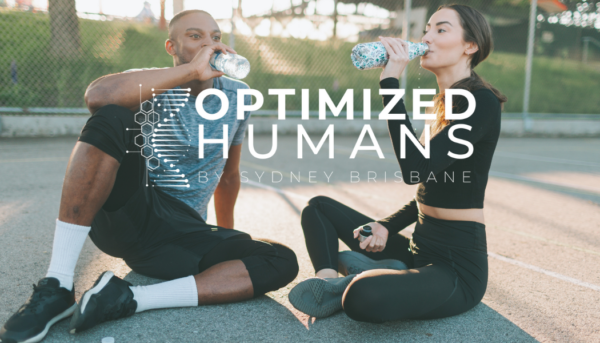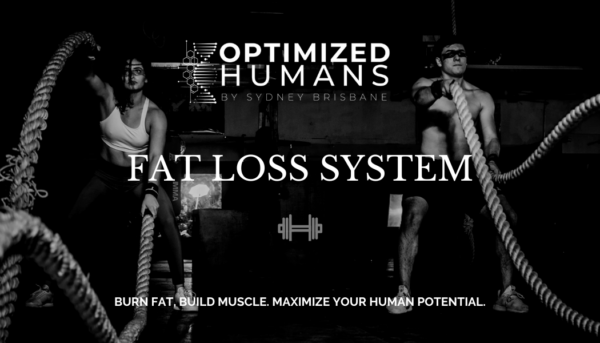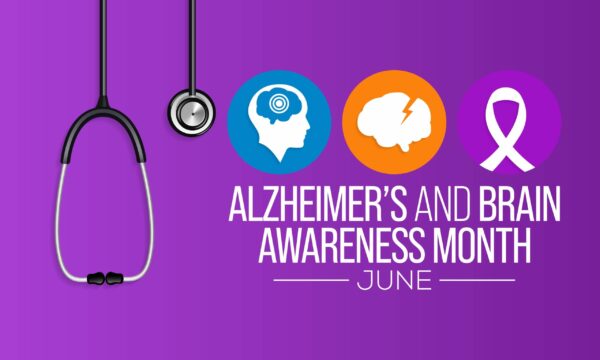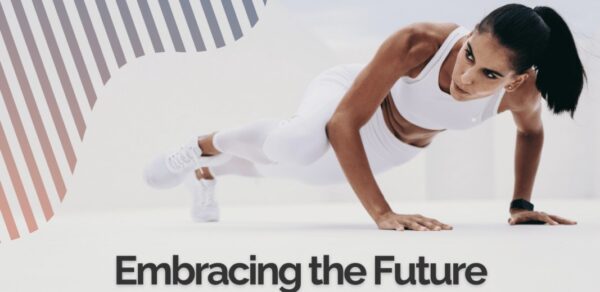
As the summer sun blazes, your workouts might feel more intense, and your body will undoubtedly work harder. Proper post-workout recovery becomes even more crucial during hot weather to ensure your body recovers efficiently and remains injury-free. The Optimized Humans program offers expert advice and resources to help you optimize your recovery. Here are the best practices for post-workout recovery in hot weather, including stretching routines and nutrition tips available in our program.
Hydration is Key
One of the most important aspects of recovery, especially in hot weather, is staying hydrated. Your body loses more fluids through sweat, so replenishing these is essential.
1. Rehydrate Immediately: Drink plenty of water immediately after your workout. Aim for at least 16-24 ounces of water within the first 30 minutes post-exercise.
2. Electrolyte Balance: Consuming drinks with electrolytes can help replenish lost salts and minerals. Consider coconut water or specially formulated electrolyte drinks.
3. Monitor Your Hydration: Check the color of your urine; a pale yellow indicates proper hydration, while darker urine suggests you need to drink more fluids.
Effective Cooling Down
Cooling down helps bring your heart rate back to normal and prevents muscle stiffness. The Optimized Humans program offers guided cool-down routines to ensure you recover properly.
1. Gradual Cool-Down: Spend at least 5-10 minutes walking or performing low-intensity movements to gradually reduce your heart rate.
2. Static Stretching: Incorporate static stretches targeting the major muscle groups you worked during your exercise. Hold each stretch for 20-30 seconds to improve flexibility and reduce muscle tension.
3. Deep Breathing: Practice deep breathing exercises to promote relaxation and aid in the recovery process. This helps lower your heart rate and can reduce post-workout stress.
Stretching Routines for Optimal Recovery
Stretching is a crucial part of the recovery process, especially after intense workouts in hot weather. The Optimized Humans app includes comprehensive stretching routines designed to enhance recovery.
1. Full-Body Stretch Routine: Focus on a full-body stretching routine that targets all major muscle groups. This can help improve flexibility, reduce muscle soreness, and prevent injuries.
2. Yoga and Mobility Work: Incorporate yoga and mobility exercises to enhance your recovery. These practices help improve joint mobility, reduce muscle stiffness, and promote relaxation.
3. Foam Rolling: Use a foam roller to release muscle tension and improve blood flow to your muscles. The app provides guided foam rolling exercises for different muscle groups.
Nutrition for Recovery
What you eat after your workout plays a significant role in your recovery. The Optimized Humans program offers personalized nutrition plans to help you refuel and repair your body.
1. Protein Intake: Consume a protein-rich snack or meal within 30-60 minutes post-workout to support muscle repair and growth. Options include protein shakes, Greek yogurt, or a turkey sandwich.
2. Carbohydrates for Energy: Pair your protein with carbohydrates to replenish glycogen stores and provide energy for recovery. Good options include fruits, whole grains, and vegetables.
3. Healthy Fats: Include healthy fats in your post-workout meal to support overall recovery and reduce inflammation. Avocados, nuts, and olive oil are excellent choices.
4. Antioxidant-Rich Foods: Consume foods rich in antioxidants to combat oxidative stress caused by intense exercise. Berries, leafy greens, and nuts are great options.
Rest and Sleep
Adequate rest and quality sleep are essential for optimal recovery. The Optimized Humans program provides tips and techniques to improve your sleep hygiene.
1. Prioritize Sleep: Aim for 7-9 hours of sleep each night to allow your body to recover fully. Sleep is when your body repairs muscles, consolidates memory, and releases growth hormones.
2. Create a Relaxing Environment: Ensure your sleep environment is cool, dark, and quiet. Consider using blackout curtains, earplugs, or a white noise machine to enhance sleep quality.
3. Consistent Sleep Schedule: Maintain a consistent sleep schedule by going to bed and waking up at the same time each day, even on weekends.
Conclusion
Recovering properly after workouts, especially in hot weather, is essential to maintain your fitness progress and overall well-being. By following these best practices for hydration, cooling down, stretching, nutrition, and rest, you can optimize your recovery and continue to perform at your best. The Optimized Humans program is here to support you with personalized recovery plans, expert advice, and comprehensive resources. Embrace these recovery techniques to stay healthy, energized, and ready for your next workout, no matter how high the temperature rises.
Exclusive Deal For You!
Unlock your potential with a complimentary 14-day trial of our #OptimizedHumans program! 🚀 Dive into customized workouts, expert guidance, and transformative resources designed to enhance your physical and mental well-being. 💪 Join hands with Sydney and our dedicated team to embark on a personalized fitness journey tailored just for you. Together, we’ll optimize your health and set you on the path to success. Plus, discover how we collaborate with companies to boost employee efficiency through tailored workout and nutrition plans. Don’t wait any longer—start your journey to optimal living today at optimizedhumans.life!

As July ushers in the height of summer, it’s the perfect time to focus on three vital health topics that are particularly relevant this season: sun safety, hydration, and healthy summer eating. By paying attention to these areas, you can ensure a fun, safe, and healthy summer for you and your loved ones.
Sun Safety and Skin Health
Summer means longer days and more sunshine, but it also brings an increased risk of sunburn and skin damage. Protecting your skin from harmful UV rays is essential to prevent issues ranging from painful sunburns to long-term risks like skin cancer.
1. Sunscreen is a Must: Apply a broad-spectrum sunscreen with an SPF of at least 30 every day, even on cloudy days. Reapply every two hours, and more often if you’re swimming or sweating.
2. Protective Clothing: Wear lightweight, long-sleeved shirts, wide-brimmed hats, and UV-blocking sunglasses to cover your skin and eyes. Clothing with a UPF (Ultraviolet Protection Factor) rating offers extra protection.
3. Seek Shade: Avoid direct sunlight during peak hours (10 a.m. to 4 p.m.). If you’re outside, find or create shade with umbrellas, canopies, or trees.
4. Know Your Skin: Regularly check your skin for any changes or new moles. Early detection is crucial for successful treatment of skin cancer. If you notice any suspicious changes, consult a dermatologist promptly.
Taking these steps ensures you can enjoy the sun safely and keep your skin healthy and radiant.
Hydration and Heat-Related Illnesses
High temperatures can quickly lead to dehydration and heat-related illnesses like heat exhaustion and heat stroke. Staying hydrated is crucial for maintaining your health during the hot summer months.
1. Drink Plenty of Water: Aim to drink at least 8-10 glasses of water a day. If you’re active or spending extended periods outside, you may need more. Carry a reusable water bottle with you to make it easy to stay hydrated on the go.
2. Eat Hydrating Foods: Incorporate water-rich foods into your diet, such as cucumbers, watermelon, strawberries, and lettuce. These not only hydrate but also provide essential vitamins and minerals.
3. Avoid Excessive Alcohol and Caffeine: Both can contribute to dehydration. If you do consume these, balance with extra water intake.
4. Recognize the Signs of Dehydration: Symptoms include dry mouth, fatigue, dizziness, and dark urine. If you experience any of these, increase your fluid intake immediately.
5. Stay Cool: Wear lightweight, loose-fitting clothing and take breaks in the shade or air-conditioned environments to prevent overheating.
By keeping these tips in mind, you can stay hydrated and healthy, even during the hottest days of summer.
Healthy Summer Eating
July offers a bounty of fresh, seasonal produce that’s both delicious and nutritious. Embracing these foods can enhance your health and make summer meals a delightful experience.
1. Seasonal Fruits and Vegetables: Take advantage of summer’s fresh produce. Berries, tomatoes, peaches, and leafy greens are at their peak, offering a range of flavors and health benefits. They’re rich in vitamins, antioxidants, and fiber, contributing to overall wellness.
2. Light and Fresh Meals: Opt for lighter meals that are easy to prepare and digest. Salads, smoothies, and grilled vegetables are excellent choices that keep you feeling energized without the heaviness of winter dishes.
3. Healthy Barbecues: If you’re grilling, choose lean proteins like chicken, fish, or plant-based options. Marinate with herbs, spices, and citrus juices instead of sugary sauces. Include plenty of grilled vegetables to add color and nutrients to your plate.
4. Stay Mindful of Portions: Summer gatherings often involve indulgent foods. Enjoy your favorites but be mindful of portion sizes to maintain a balanced diet.
5. Hydrating Beverages: Make your own refreshing drinks with natural ingredients. Infuse water with fruits and herbs, or make iced herbal teas to stay hydrated and avoid sugary sodas.
Embracing the vibrant flavors of summer produce not only enhances your meals but also boosts your health, keeping you refreshed and nourished during the hot months.
By prioritizing sun safety, hydration, and nutritious eating, you can make the most of July’s long days and warm weather. These practices will help you stay healthy, energized, and ready to enjoy all the fun activities that summer has to offer. Remember, taking care of yourself today sets the foundation for a healthier tomorrow. Enjoy your summer, stay safe, and make the most of this wonderful season!
Exclusive Promotion For You!
Unlock your potential with a complimentary 14-day trial of our #OptimizedHumans program! 🚀 Dive into customized workouts, expert guidance, and transformative resources designed to enhance your physical and mental well-being. 💪 Join hands with Sydney and our dedicated team to embark on a personalized fitness journey tailored just for you. Together, we’ll optimize your health and set you on the path to success. Plus, discover how we collaborate with companies to boost employee efficiency through tailored workout and nutrition plans. Don’t wait any longer—start your journey to optimal living today at optimizedhumans.life!

Summer is the perfect time to ramp up your fitness routine, take advantage of the beautiful weather, and work towards your health goals. Whether you’re looking to get in shape, stay active, or try new workouts, the Optimized Humans program offers the tools and guidance you need to maximize your summer fitness routine. Here’s how you can leverage the personalized workouts and features available in the Optimized Humans app to stay fit and motivated all summer long.
Personalized Workouts Tailored to Your Goals
One of the standout features of the Optimized Humans program is the ability to create personalized workout plans tailored to your individual goals. Whether you’re aiming to lose weight, build muscle, improve endurance, or simply maintain your current fitness level, the app offers a variety of workouts designed to meet your specific needs.
1. Customizable Plans: The app allows you to set your fitness goals and preferences, creating a workout plan that fits your schedule and interests. Whether you prefer strength training, cardio, HIIT, or a mix of everything, Optimized Humans has you covered.
2. Adaptive Workouts: The app adjusts your workout intensity based on your progress, ensuring you are continually challenged and making improvements. This adaptive approach helps prevent plateaus and keeps your fitness journey exciting.
3. Variety of Exercises: With a vast library of exercises and routines, you’ll never get bored. From yoga and Pilates to high-intensity interval training and weightlifting, the app offers something for everyone, catering to all fitness levels and interests.
Outdoor and Home Workouts
Summer is the ideal time to take your workouts outdoors. Optimized Humans provides a range of outdoor workout options that can be easily integrated into your fitness routine.
1. Outdoor Fitness Routines: The app features guided outdoor workouts such as running, cycling, and bodyweight exercises that can be performed in parks, beaches, or your backyard. Enjoy the fresh air and sunshine while staying active.
2. Home Workouts: If you prefer working out at home, Optimized Humans offers numerous routines that require minimal to no equipment. These workouts are perfect for days when you want to stay indoors or if you’re traveling and don’t have access to a gym.
3. Location-Based Recommendations: The app can suggest nearby parks, trails, and outdoor fitness spots, making it easier for you to find the perfect location for your workout.
Track Your Progress and Stay Motivated
Staying motivated is key to maintaining a consistent fitness routine, and Optimized Humans provides several features to help you stay on track.
1. Progress Tracking: The app allows you to track your workouts, monitor your progress, and set new goals. Visualizing your improvements can be incredibly motivating and help you stay committed to your fitness journey.
2. Personalized Feedback: Receive real-time feedback and tips from virtual trainers based on your performance. This personalized guidance ensures you’re performing exercises correctly and efficiently.
3. Community Support: Connect with other users through the app’s community features. Share your achievements, participate in challenges, and find workout buddies to keep you motivated and accountable.
Nutrition Guidance and Meal Planning
A well-rounded fitness routine includes not only exercise but also proper nutrition. Optimized Humans offers nutritional guidance and meal planning features to complement your workouts and help you achieve your health goals.
1. Personalized Meal Plans: Based on your dietary preferences and fitness goals, the app provides customized meal plans and recipes to fuel your body with the right nutrients.
2. Nutritional Tracking: Keep track of your daily food intake, monitor your macros, and ensure you’re meeting your nutritional needs. The app makes it easy to stay on top of your diet and make healthier choices.
3. Healthy Summer Recipes: Discover delicious and nutritious summer recipes that are easy to prepare and perfect for the season. From refreshing smoothies to light salads, the app offers a variety of options to keep your diet exciting and wholesome.
Conclusion
Maximizing your summer fitness routine is effortless with the Optimized Humans program. By leveraging the personalized workouts, outdoor and home fitness options, progress tracking, and nutritional guidance, you can stay fit, motivated, and healthy all summer long. Download the Optimized Humans app today and start your journey towards a more active and fulfilling summer. Embrace the season with a renewed focus on your fitness goals and let Optimized Humans be your partner in achieving them.

June, a month dedicated to unleashing the full potential of our brainpower and igniting awareness for Alzheimer’s disease. As we embark on this journey of enlightenment and advocacy, let’s explore how we can channel our collective energy to raise awareness, support research, and empower those affected by Alzheimer’s. Join us as we delve into actionable strategies to make a difference this Alzheimer’s Awareness Month.
Raising Awareness:
Awareness is the first step towards meaningful change. Spread the word about Alzheimer’s disease and its impact on individuals, families, and communities. Share informative resources, personal stories, and advocacy initiatives on social media platforms, in your local community, and among your networks. By raising awareness, we can shine a light on Alzheimer’s and inspire others to join the fight.
Supporting Research:
Research is the cornerstone of progress in the fight against Alzheimer’s. Get involved in fundraising events, volunteer opportunities, and advocacy campaigns to support organizations dedicated to Alzheimer’s research. Your contributions can fund groundbreaking studies, clinical trials, and innovative treatments that bring us closer to a world without Alzheimer’s.
Empowering Those Affected:
Alzheimer’s affects millions of individuals and their loved ones worldwide. Show your support by offering compassion, understanding, and practical assistance to those living with Alzheimer’s and their caregivers. Volunteer at local memory care facilities, participate in support groups, or simply lend a listening ear to someone in need. Your kindness and empathy can make a world of difference in the lives of those affected by Alzheimer’s.
Taking Action for Change:
Action speaks louder than words. Advocate for policy changes, increased funding for Alzheimer’s research, and improved access to care and support services. Write letters to lawmakers, participate in advocacy events, and engage with advocacy organizations to amplify your voice and drive meaningful change at local, national, and global levels.
As we ignite awareness for Alzheimer’s this June, let’s unleash the full power of our brainpower to make a difference. By raising awareness, supporting research, empowering those affected, and taking action for change, we can create a future where Alzheimer’s no longer robs individuals of their memories and dignity. Together, let’s stand united in the fight against Alzheimer’s and ignite a spark of hope for generations to come.
Thank you for taking this journey with us. Hopefully this has made you more aware of the necessity of good health. If you can make an impact throughout Alzheimer’s and Brain Awareness Month and Maximize Your Human Potential!

We are in the third week battling against Alzheimer’s and cognitive decline takes center stage. In this month dedicated to raising awareness, let’s explore how we can harness the power of mind over matter to combat these formidable adversaries. Join us as we dive into effective strategies to preserve cognitive function and champion brain health.
Navigating Alzheimer’s:
Alzheimer’s disease poses a significant challenge to individuals and communities worldwide. However, armed with knowledge and determination, we can navigate this journey with resilience. Explore treatment options such as cognitive enhancers and lifestyle interventions to manage symptoms and enhance quality of life. Additionally, participate in clinical trials to contribute to the advancement of Alzheimer’s research and potential breakthroughs.
Fueling Brain Resilience:
Just as a car needs fuel to run smoothly, our brains require nourishment to function optimally. Adopt a brain-healthy diet rich in nutrients like antioxidants, omega-3 fatty acids, and vitamins B and D. Incorporate foods such as fatty fish, leafy greens, nuts, and berries to support cognitive resilience and protect against age-related cognitive decline.
Empowering Early Detection:
Early detection is critical in the fight against Alzheimer’s and cognitive decline. Embrace the power of blood tests to identify biomarkers associated with brain health and cognitive function. Routine screenings for cholesterol, glucose, and inflammation levels can provide valuable insights and prompt proactive interventions to mitigate risk factors and promote brain resilience.
Insights from Genetic Profiling:
Genetic profiling offers personalized insights into individual susceptibility to Alzheimer’s disease and cognitive decline. By understanding genetic risk factors, individuals can implement targeted interventions to optimize brain health and reduce the likelihood of developing cognitive impairments. Explore lifestyle modifications, including regular exercise, stress management, and cognitive stimulation, to bolster brain resilience and support overall well-being.
Conclusion:
As we embark on June’s battle against Alzheimer’s and cognitive decline, let’s remember that mind over matter can be a powerful force for change. By navigating Alzheimer’s with resilience, fueling brain resilience with a nutrient-rich diet, empowering early detection through blood tests, and gaining insights from genetic profiling, we can tilt the odds in favor of cognitive vitality. Together, let’s embrace the challenge and pave the way for a future where cognitive health flourishes.
Stay tuned for our last actionable insights and tips throughout Alzheimer’s and Brain Awareness Month!

In the midst of June’s fervor for Alzheimer’s awareness, it’s time to recognize that memory matters. This month serves as a rallying cry to join the movement for brain health and take proactive steps to safeguard cognitive function. Let’s delve into practical strategies to champion brain health and honor the importance of memory in our lives.
Prioritizing Brain Health:
Maintaining brain health is crucial for preserving cognitive function and warding off conditions like Alzheimer’s disease. Engage in activities that stimulate the mind, such as puzzles, reading, and learning new skills. Physical exercise is also essential, as it enhances blood flow to the brain and promotes the growth of new brain cells. Make regular exercise a cornerstone of your routine to support long-term brain health.
Nutritional Support for the Brain:
Nutrition plays a pivotal role in brain health. Adopt a brain-boosting diet rich in fruits, vegetables, whole grains, and lean proteins. Incorporate foods high in antioxidants, such as berries, nuts, and leafy greens, to combat oxidative stress and protect brain cells from damage. Additionally, consider supplements like vitamin D and magnesium, which have been linked to improved cognitive function and mood regulation.
Harnessing the Power of Blood Tests:
Blood tests offer a window into our brain health, providing valuable insights for early detection and intervention. Routine blood screenings can assess cholesterol levels, blood sugar levels, and inflammatory markers, which impact brain health. Monitoring these biomarkers allows for timely intervention to mitigate risk factors and optimize brain function.
Insights from Genetic Testing:
Genetic testing empowers individuals to understand their unique risk factors for Alzheimer’s disease. By identifying genetic predispositions early on, individuals can implement personalized strategies to reduce risk and promote brain health. Embrace lifestyle modifications such as maintaining a healthy weight, managing stress, and prioritizing quality sleep to support overall well-being and cognitive vitality.
Conclusion:
As we navigate Alzheimer’s Awareness Month, let’s reaffirm that memory matters. By prioritizing brain health, embracing nutritional support, harnessing the power of blood tests, and gaining insights from genetic testing, we can champion cognitive vitality and honor the importance of memory in our lives. Together, let’s join the movement for brain health and pave the way for a brighter, more resilient future.
Stay tuned for more actionable insights and tips throughout Alzheimer’s and Brain Awareness Month!
Valentine’s Day is synonymous with indulgent treats and decadent meals, but who says you can’t celebrate love while nourishing your body?
This year, embark on a culinary journey that embraces both romance and well-being with these delightful and healthy recipes. Show your love through delicious, nutrient-packed dishes that will leave both your heart and taste buds content.
Grilled Salmon with Lemon-Dill Sauce
Start your romantic dinner with a heart-healthy choice. Grilled salmon is rich in omega-3 fatty acids, while the zesty lemon-dill sauce adds a burst of flavor. Serve it with a side of quinoa and steamed vegetables for a well-balanced, nutrient-dense meal.
Caprese Stuffed Avocados
Elevate the classic Caprese salad by turning it into a visually stunning and nutrient-packed dish. Stuff ripe avocados with cherry tomatoes, fresh mozzarella, and basil. Drizzle with a balsamic glaze for a taste of indulgence without compromising on health.
Zucchini Noodles with Pesto and Cherry Tomatoes
Embrace the trend of vegetable noodles with this light and flavorful dish. Spiralize zucchini into noodles and toss them with a vibrant pesto sauce. Add cherry tomatoes for a burst of sweetness, creating a low-carb, high-flavor option that’s perfect for a romantic evening.
Balsamic Glazed Chicken with Roasted Vegetables
Impress your loved one with a succulent balsamic glazed chicken accompanied by a medley of roasted vegetables. The balsamic glaze adds a touch of sweetness, while the colorful vegetables provide an array of essential nutrients. It’s a dish that marries taste and health effortlessly.
Chocolate-Dipped Strawberries
No Valentine’s Day is complete without a touch of chocolate. Opt for a healthier dessert by dipping fresh strawberries in dark chocolate. Dark chocolate is rich in antioxidants and, when paired with the juiciness of strawberries, creates a guilt-free indulgence.
Mango Avocado Salsa with Grilled Chicken
Bring a tropical twist to your Valentine’s Day dinner with a refreshing mango avocado salsa. Top grilled chicken with this vibrant salsa for a combination that is not only visually appealing but also a delightful blend of sweet and savory flavors.
Chia Seed Pudding Parfait
End your romantic meal on a healthy note with a chia seed pudding parfait. Layer chia seed pudding with fresh berries and a dollop of Greek yogurt. This dessert is not only delicious but also a great source of fiber and protein.
This Valentine’s Day, treat your loved one to a romantic feast that not only ignites the senses but also nurtures your well-being. These healthy recipes showcase that love can be both delicious and nutritious. Celebrate the joy of good food, good health, and the company of your special someone on this day dedicated to love and connection.

Valentine’s Day beckons, and what better way to celebrate love than by intertwining romance with wellness and fitness? This year, transcend the conventional dinner date and indulge in activities that not only deepen your connection but also promote well-being. Discover a harmonious blend of romance and health with these unique Valentine’s Day ideas.
1. Sunset Wellness Picnic
Combine the serenity of nature with wellness by opting for a sunset wellness picnic. Choose a picturesque setting and pack a basket filled with wholesome, nutritious treats. Engage in heart-opening yoga poses together as you bask in the warm glow of the setting sun.
2. Culinary Wellness Experience
Embark on a journey of culinary delight with a private cooking class focused on healthy, nourishing cuisine. Explore recipes that not only tantalize your taste buds but also contribute to your overall well-being. It’s a bonding experience that aligns with both love and health.
3. Celestial Stargazing Yoga
Elevate your connection to the cosmos with a celestial stargazing and yoga adventure. Head to a serene location, lay out your yoga mats, and engage in gentle yoga poses under the starlit sky. This mindful experience fosters a connection between body, mind, and the universe.
4. Wellness Spa Night at Home
Transform your home into a haven of relaxation with a wellness spa night. Indulge in self-care activities like massages, DIY face masks using natural ingredients, and unwind with calming essential oils. It’s a rejuvenating experience that nurtures both your relationship and well-being.
5. Artistic Fitness Fusion
Combine creativity and fitness with an artistic fitness fusion night. Opt for a couples’ dance class, expressing yourselves through movement and music. This unique combination of art and physical activity adds a playful touch to your celebration.
6. Adventure-Fueled Outdoor Fitness
If you’re an adventurous couple, opt for an outdoor fitness activity such as hiking, biking, or even a couples’ workout session in a scenic location. The endorphin rush from physical activity enhances your well-being while creating lasting memories.
7. Wellness Cinema Under the Stars
Craft a wellness-infused movie night under the stars. Choose films that inspire healthy living or incorporate wellness themes. Snuggle up under blankets and indulge in nutritious snacks for a cozy yet health-conscious cinematic experience.
Conclusion:
This Valentine’s Day, transcend the ordinary and merge the realms of love, wellness, and fitness. From wellness picnics to celestial stargazing yoga, these activities promise a celebration that not only strengthens your bond but also nurtures your well-being. Embrace the holistic essence of your relationship and make this Valentine’s Day a chapter in your love story that radiates health, happiness, and lasting memories.

In a world driven by innovation and a relentless pursuit of optimal well-being, the concept of biohacking is steadily making its way into the mainstream. Once confined to the realms of Silicon Valley and scientific laboratories, biohacking is now emerging as a household term, poised to redefine how we approach health and performance.
Biohacking, at its core, is the art and science of optimizing one’s biology for peak performance. It encompasses a diverse range of practices, from personalized nutrition and sleep optimization to wearable technology and genetic testing. As we navigate the ever-evolving landscape of wellness, the gradual integration of biohacking into mainstream consciousness prompts us to consider: Are we on the brink of a paradigm shift in how we view and manage our health?
The allure of biohacking lies in its individualized approach, acknowledging that each person’s biology is unique. As more people recognize the potential to unlock their full potential through tailored interventions, biohacking transcends its niche origins, becoming a catalyst for a broader movement towards proactive health optimization.
In 2024, biohacking isn’t just a buzzword; it’s a transformative force shaping the future of personalized well-being, where the intersection of science and everyday life empowers individuals to become architects of their own vitality.
In a world that is constantly evolving, so too are our approaches to fitness. Virtual workouts have emerged as a dynamic force, steadily gaining popularity in recent years, and all signs point to this trend continuing to thrive in 2024. The allure of virtual workouts lies in their convenience, affordability, and personalized nature, offering a revolutionary way to stay fit without the constraints of a traditional gym setting.
Convenience Redefined
One of the primary draws of virtual workouts is the unparalleled convenience they offer. No longer bound by the constraints of time or location, fitness enthusiasts can engage in effective workouts from the comfort of their homes or any location that suits them. The flexibility of virtual workouts caters to busy schedules, making it easier for individuals to seamlessly integrate exercise into their daily routines.
Affordability at its Core
The financial barriers that often accompany traditional gym memberships become a thing of the past with virtual workouts. The affordability of these programs makes fitness accessible to a broader demographic, leveling the playing field and empowering individuals from various walks of life to prioritize their health and well-being without breaking the bank.
Tailored to Individual Needs
Virtual workouts stand out for their ability to be customized to individual needs and preferences. Whether you’re a seasoned fitness enthusiast or a beginner taking your first steps on the wellness journey, virtual workouts provide a diverse range of programs that cater to different fitness levels, goals, and preferences. The ability to tailor workouts ensures that each session is not just effective but also enjoyable, enhancing the overall fitness experience.
The Future of Fitness in 2024
As we look ahead to 2024, the trajectory of virtual workouts appears poised for continued growth and innovation. Technological advancements, coupled with an increasing emphasis on personalized fitness experiences, will likely shape the future of virtual workouts. From interactive live sessions to immersive virtual reality workouts, the possibilities are vast, promising an exciting evolution in how we approach fitness.
Conclusion
Virtual workouts have undeniably become a cornerstone of the modern fitness landscape. With their unmatched convenience, affordability, and personalized approach, they have transformed the way we view and engage in exercise. As we step into 2024, the virtual fitness revolution shows no signs of slowing down, offering a fitness frontier that is inclusive, adaptable, and tailored to the unique needs of each individual.
In this era of virtual fitness, the Optimized Humans Fitness App stands out as a beacon of personalized training excellence. The app, coupled with expert trainers, seamlessly integrates the benefits of virtual workouts with a personalized touch. Through a diverse array of customizable programs, interactive live sessions, and real-time guidance from experienced trainers, the Optimized Humans Fitness App ensures that your fitness journey is not just virtual but uniquely yours. It’s the perfect answer to the evolving landscape of virtual training, where technology and personalization converge to deliver an unparalleled fitness experience. Embrace the future of fitness with the Optimized Humans Fitness App—an innovative solution that brings the gym to you, tailoring workouts to your individual needs and goals, making fitness both effective and enjoyable.

